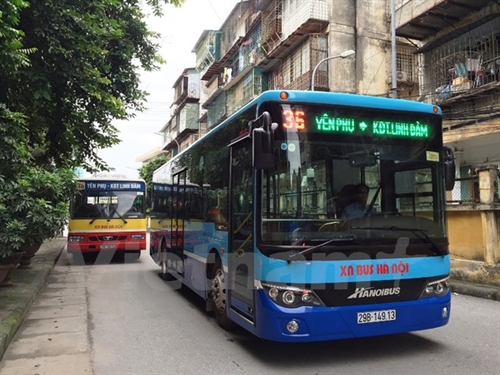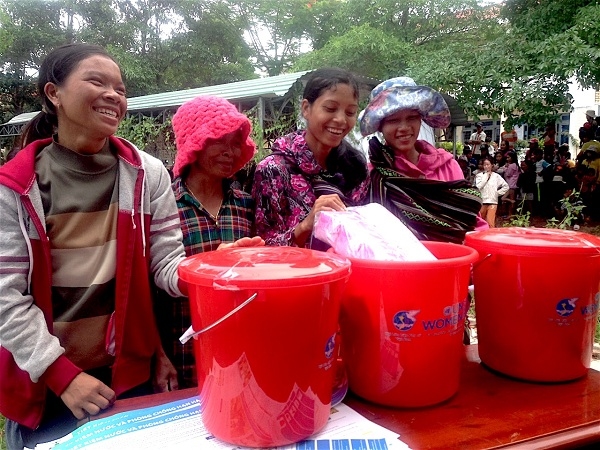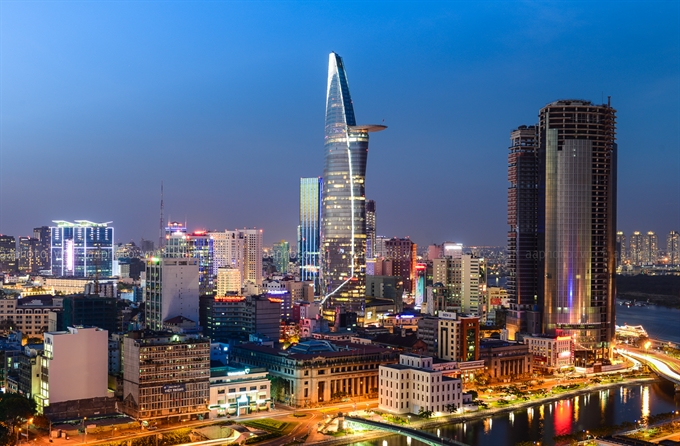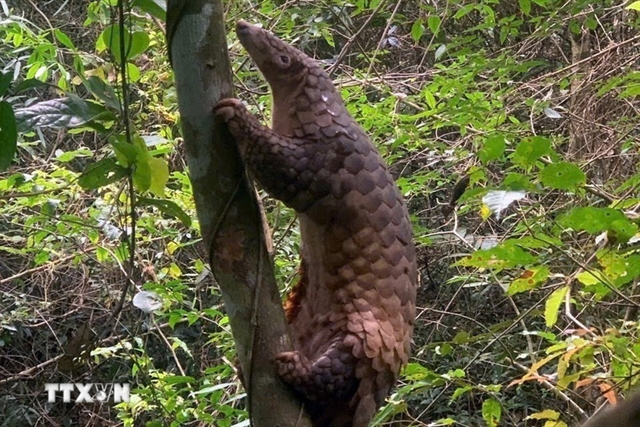
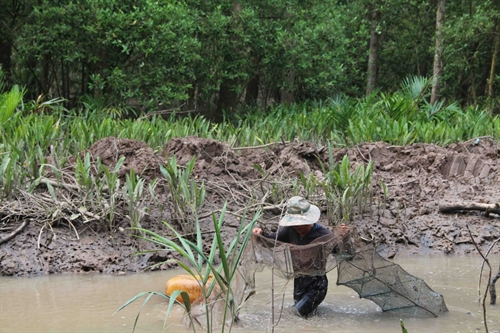 |
| Đặng Văn Út Em fishes with a net for shrimp and fish. He earns VNĐ200,000–300,000 per day. — VNS Photo Phúc Sơn |
By Huỳnh Phúc Sơn
Standing on a sea dyke, Dương Văn Điện pointed to the lush forest in front of us, his voice full of happiness.
“For the past 10 years, the forest’s development has helped reduce saltwater intrusion and protected the land from rogue waves. A lot of fish, shrimp, and oysters live in the waters surrounding the forest.”
It has been 25 years since he joined a group of people starting to grow bần trees – or sonneratia alba, a type of mangrove tree – along the coast of Cầu Ngang District in the Mekong Delta province of Trà Vinh.
The bần forest is now regarded as a “treasure” by local people. It is a “wall of greenery” which protects them from rough seas, creating a safe haven for the marine creatures from which they earn their living.
“Every day hundreds of people come to catch fish and shellfish. In the months before the Lunar New Year, there are many sea crabs here. People from neighbouring provinces, like Bến Tre and Sóc Trăng, also come to hunt crabs,” said Điện, who heads Trà Vinh Province’s Forest Ranger Branch.
Thanks to the forest, the threat of flood tides has diminished, allowing locals to expand their shrimp-breeding businesses. The breeding area currently covers more than 1100 hectares, raking in up to VNĐ300-350 billion (US$13.4 – 15.6 million) in a bumper harvest year.
Such success was beyond imagination for Điện and the members of his team when they started the afforestation project in 1992.
 |
| The 880ha forest stretches 15 kilometres within the communes of Mỹ Long Bắc, Mỹ Long Nam and Mỹ Long Town in Cầu Ngang District. — VNS Photo Phúc Sơn |
Hard times
In the 1980s and early 1990s, Cầu Ngang District’s seaside was frequently attacked by rogue waves triggered by easterly monsoon winds. During a 1998 storm, waves destroyed the whole sea dyke system and swept away people’s crops and properties. Saltwater intrusion was a problem. Reports from 1975 to 1990 document saltwater intrusion in an area stretching 10km long and 100m wide.
A primeval mangrove forest in this area once protected the locality from strong winds and waves. But it was gradually destroyed by locals needing firewood. About 60 per cent of the 1,600 households in Mỹ Long Nam Commune were categorised as poor households at the time. Selling firewood was a way for the poor to earn money to survive.
Facing severe threats from the sea, the provincial authority decided to begin growing bần trees along the 15-km seashore, from Bãi Vàng to Mỹ Long Nam. Six people, including Điện, were assigned the task.
“It was very hard in the beginning,” Điện recalled. “We did not have seed trees when we started. We had to travel to alluvial plains along seas and rivers in other areas to collect saplings.
“At first, we managed to collect 10,000 saplings. We hired people to grow them. But then came a misfortune we could not have anticipated. All the newly-planted trees were uprooted by strong waves. It took us several days to collect the young mangrove trees floating in the water.”
This made many people think their job was so unrealistic that “it was no use throwing money in the sea”.
For a while Điện and his teammates were also afraid the plan would go bankrupt.
But “adversity brings wisdom”.
“We finally came up with a way to protect the saplings. We used bamboo to weave a big ’basket’ and grew the saplings inside. We waited until each tree grew 1.5m tall, then transplanted it to the planting areas using stakes to prop it up,” Điện said.
“We worked day and night. Whenever the tide ebbed away, we set out to plant and tend trees.”
Their hard work finally paid off. The trees began to set deep roots into the soil and were able to withstand the waves.
Twenty five years later, an 880ha-forest now stretches 15 kilometres along the seashore in Mỹ Long Bắc and Mỹ Long Nam communes and in Mỹ Long Town in Cầu Ngang District.
The huge benefits from the forest help locals escape lingering poverty. Local men no longer have to leave families behind to go to the southeast region, struggling to feed their families.
Đặng Văn Út Em hails from hamlet 1 in Mỹ Long town. His family used to meet the Vietnamese legal definition of a poor household, earning less than VNĐ700,000 per person each month. Now he works in the forest by day. His family has lived a stable life for the past 10 years, thanks to the forest.
“Every day, I earn about VNĐ200,000-300,000 ($9-13), catching fish and shrimp,” Em said.
Thạch Sa Phone and his wife, from Mỹ Hòa commune 25km from the forest, shared a similar story.
They come here every day to catch fish when the tide rises and eel when the tide ebbs. They earn VNĐ300,000-400,000 per day: a dream income compared to the national per capita income of $2,200 last year documented by government statistics. They do not have access to farm land, but they feed their family of six this way.
Some 200 local households who do not have farmland in Cầu Ngang District, plus 13 local agencies, were given 824ha of forest to protect and care for. As a result, they now have a mandate to harvest aquaproducts and to practice aquaculture production locally.
“I am breeding hundreds of kilograms of vọp (Geloina coaxans - a mud clam which lives in the mangrove forests). If this succeeds, I hope it will become a new model of thriving production for those who live by the forest like me,” said Phạm Văn Quắn, a resident of Tư hamlet in Mỹ Long Nam Commune who was given a hectare of forest to tend. Quắn also earns money catching seafood and collecting dried bần trees for firewood.
“Deforestation is no longer a problem,” Điện said happily. “People here now know the value of the forest and treasure it more than ever.” — VNS






